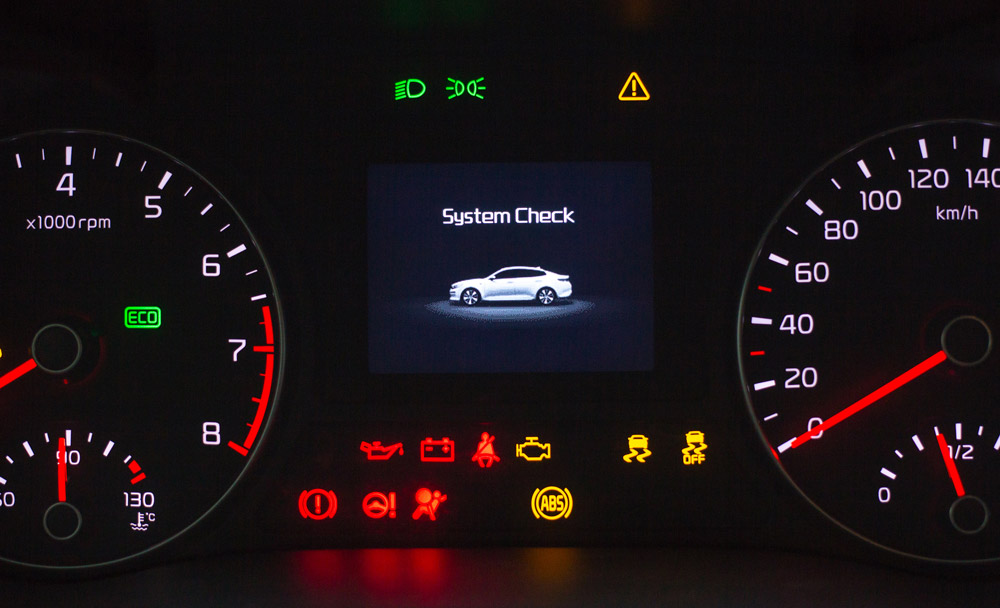
This is the Sign
We are all familiar with the common situation in a relationship when we can tell that something is wrong. We might go on like nothing has changed, hoping it will resolve itself, or we may even ask if anything is the matter. Often, the best way to start resolving these problems is to pay attention to the clues and act accordingly. After all, the fact that we can tell something isn’t normal means that it isn’t likely to fix itself over time — we need to be mindful of what the other person is telling us, either in word or in deed.
Our vehicles are the same way.
We might feel something odd while driving — maybe a grinding of the brakes or sluggishness in the power steering — and will wonder aloud what the matter is but unless we read the signs and take them seriously, we will essentially be asking for a breakdown later down the road. When something is wrong, the car’s dashboard lights are that sign.
Time for a Car Repair
Your car’s dash lights are there to fulfill one overarching purpose: to let you know how it’s performing, according to its various systems and components. The response whenever we see one of these lights is to be on the lookout for an opportunity to park the car, or take it to Master Muffler’s Ogden car repair center, and have it checked out. Unfortunately, too many drivers choose not to do this.
Yes, like a boyfriend who hopes that his girlfriend’s silent treatment will more or less sort itself out, many drivers — nearly 50%, to be exact — admit to hoping the problem will go away as easily as it showed up. And yet, every dash light should be treated with the same respect as the gas tank indicator, which lights up and sends drivers to the gas station in less than a day.
The Most Common Dashboard Warnings
There may be a percentage of drivers who choose to ignore their warning lights because they aren’t exactly sure what they mean and don’t want to spend a hefty amount on car repairs on something that might only amount to a simple fluid top-off on their part.
In that spirit, we’ve assembled a list of the most common dashboard warning lights you’re likely to see (and a few rare ones that mean serious business). Understanding what these warnings entail and the best course of action in dealing with them is the best way to avoid serious damage, as well as serious mechanic fees.
Oil Light
This symbol looks like a little oil can with a drop of oil leaking out of the spout. It triggers usually when the oil level is getting low or the oil pump has stopped working properly. If you see this symbol, you’re likely due for an oil change and a top-off.
- Change your oil every 5.000 – 7.500 miles.
Our Ogden car repair center can handle that for you with ease and efficiency.
Battery Light
This light looks like a typical battery with the +/- polarity indicators. It usually means your battery is dead or dying. If left unchecked by car repair specialists, your vehicle will eventually lose all motor function and will become completely unresponsive when you turn your key.
- Batteries need to be replaced every three years or so. This is also about as often as you need to bring your car in for a bumper-to-bumper tune-up.
Various Temperature Lights
These extremely important signals look relatively similar, like a thermometer rising out of a pool of water. There are two variations on these warnings:
- Coolant Temperature: A blue thermometer, indicating that your engine has overheated and needs to be shut down. You will likely need to replace your coolant.
- Transmission Temperature: A yellow thermometer, encircled by a yellow gear. This light warns you that the internal workings of your driveshaft are running too hot. This could be caused by low transmission fluid or grinding gears that need to be replaced.
Check Engine Light
Perhaps the most common light you’re likely to see. This signal looks like a small, yellow engine and is signaling any one of a number of things, including:
- A broken gasket
- A loose gas cap
- An issue with one of the pistons
- The engine’s onboard computer diagnostics need to be checked
Because the check engine light can mean a myriad of things ranging from big problems to small updates, many drivers roll the dice on taking their car to our Ogden car repair center in a timely manner. Statistically, nearly half of all drivers wait days or even months to act on this light. The truth is, however, that any wasted time simply means a more expensive fix later on.
Related Posts
As an EV owner, understanding your vehicle's battery is critical. From its capacity to its lifespan, and everything in between, we'll guide you through what you need to know to optimize your EV experience. So buckle up and get ready - we're about to shed some light on the electrifying world of EV batteries. What [...]
If your car is running hot, it can be a sign that something’s not right with your engine. Fortunately, diagnosing the cause of an overheating engine isn't too difficult if you know what to look for and how to address it. Keep reading if you want to learn the most common issues that occur when [...]
Your vehicle's exhaust system serves a critical role in managing the byproducts of the combustion process and ensuring optimal engine performance. The appearance of colored smoke from the exhaust pipe, either when stationary or accelerating, can provide valuable clues to underlying mechanical issues. What is a car exhaust? A car exhaust is a system [...]





